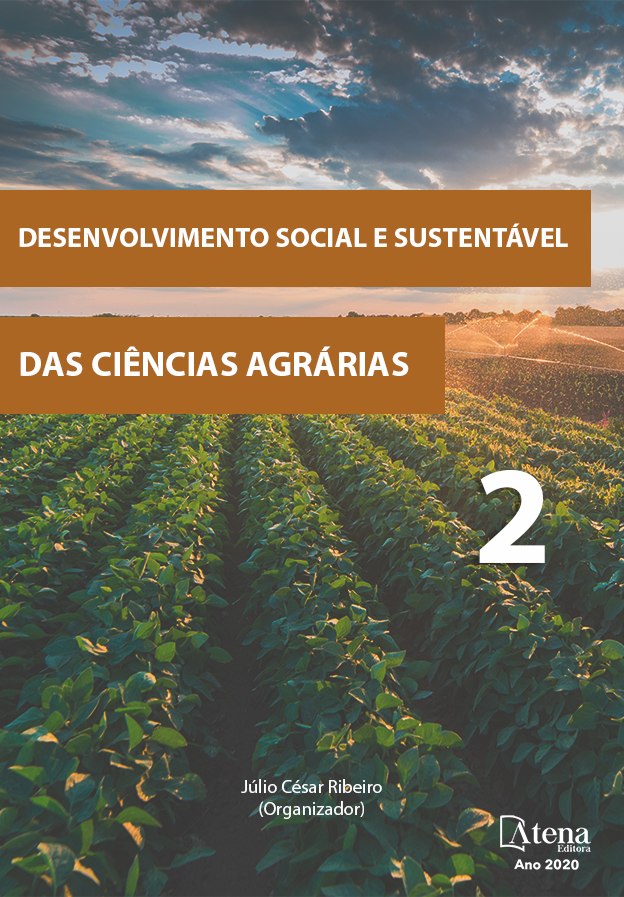
LEVANTAMENTO FLORÍSTICO DO FRAGMENTO FLORESTAL DA FAZENDA UniSALESIANO DE LINS - SP
Levantamentos florísticos são de extrema importância para o conhecimento da composição e distribuição de espécies nativas em ambientes naturais. Esse conhecimento fornece informações sobre a diversidade, distribuição e classificação das mesmas quanto à forma de vida e modo de dispersão, sendo importante na tomada de decisão em planejamentos de recuperação e produção de mudas de espécies nativas. Assim, o objetivo desse trabalho foi realizar o levantamento florístico em remanescente de Floresta Estacional Semidecidual de aproximadamente de 1,68 ha na Fazenda Experimental do UniSALESIANO de Lins, localizada no km 1 da estrada Mário Covas Júnior, Vila Guararapes, próximo às coordenadas geográficas de 21° 42’ 38.67’’ S e 49° 45’ 14.37’’ O, nas proximidades do município de Lins, estado de São Paulo, através de visitas semanais. O levantamento florístico teve início em dezembro de 2016 através de caminhadas e censo, que consiste em realizar um levantamento quantitativo e qualitativo, compreendendo a identificação, localização através de georreferenciamento, distribuição e avaliação de todos os indivíduos arbóreos presentes na área com circunferência a altura do peito (CAP) igual ou maior a 10 cm, a altura em metros considerando a base da árvore até sua altura máxima. As espécies não identificadas se fez uma coleta do material vegetativo (folhas) e reprodutivo (flores, frutos e sementes) para identificação posterior com auxílio de chaves botânicas e literatura especializada. Foram amostrados 772 indivíduos, distribuídos em 38 espécies, 34 gêneros, pertencentes a 19 famílias, sendo que duas espécies são exóticas Moringa oleífera e Morus alba. Não foi possível a identificação de oito espécies por apresentarem somente material vegetativo no período da realização desse trabalho. As famílias que apresentaram maior número de espécies amostradas foram Fabaceae (9 espécies), Bignoniaceae (5 espécies), Moraceae (3 espécies), Anacardiaceae (2 espécies), Araliaceae (2 espécies), Malvaceae (2 espécies), Meliaceae (2 espécies), Myrtaceae (2 espécies), correspondendo a 70% da amostra total. As espécies com maior número de indivíduos no fragmento foram Myracrodruon urundeuva, Tabernaemontana hystrix, Schinus terebinthifolia, Anadenanthera macrocarpa, Casearia sylvestris, Luehea divaricata, Peltophorum dubium, Croton urucurana, Acacia polyphylla, Zanthoxylum rhoifolium, Anadenanthera colubrina, Cecropia pachystachya, Handroanthus impetigionosus, Psidium guajava, Eugenia uniflora, Pterogyne nitens e Tabebuia roseoalba. A partir das espécies identificadas, os dados coletados servirão como parâmetro para recuperação florestal de propriedades rurais da região e futuros projetos de restauração de ambientes degradados e sem cobertura vegetal, seja em áreas de APP, Reserva Legal, Sistemas Agroflorestais, coleta de sementes e produção de mudas, implantação de trilhas identificadas para atender diversos públicos e entre outros.
LEVANTAMENTO FLORÍSTICO DO FRAGMENTO FLORESTAL DA FAZENDA UniSALESIANO DE LINS - SP
-
DOI: 10.22533/at.ed.71920091021
-
Palavras-chave: Levantamento Florístico. Remanescente Florestal. Fazenda UniSALESIANO de Lins. Espécies Nativas.
-
Keywords: Floristic Survey. Remnant Forest. UniSALESIANO Farm of Lins. Native Species.
-
Abstract:
Floristic surveys are extremely important for knowledge of the composition and distribution of native species in natural environments. This knowledge provides information on the diversity, distribution and classification of the species in terms of the way of life and mode of dispersion, being important in the decision making in recovery plans and seedling production of native species. The objective of this work was to carry out the floristic survey in the remnant of the Semideciduous Seasonal Forest of approximately 1,68 ha in the Experimental Farm of the UniSALESIANO de Lins, located at km 1 of the Mário Covas Júnior road, Vila Guararapes, close to the geographical coordinates of 21° 42' 38.67'' S and 49° 45' 14.37'' W, in the vicinity of the municipality of Lins, state of São Paulo, through weekly visits. The floristic survey began in December 2016 through hiking and census, which consists of a quantitative and qualitative survey, including the identification, location through geo-referencing, distribution and evaluation of all tree individuals present in the area with circumference a height of the tree (CAP) up to 10 cm, height in meters considering the base of the tree up to its maximum height, the unidentified species were collected from the vegetative (leaves) and reproductive material (flowers, fruits and seeds) for identification with the help of botanical keys and specialized literature. Were total of 772 individuals was sampled, distributed in 38 species, 34 genera belonging to 19 families, two species being exotic, Moringa oleifera and Morus alba. It was not possible to identify eight species because they presented only vegetative material during the period of this work. The families with the highest number of species were Fabaceae (9 species), Bignoniaceae (5 species), Moraceae (3 species), Anacardiaceae (2 species), Araliaceae (2 species), Malvaceae (2 species), Meliaceae (2 species), Myrtaceae (2 species), corresponding to 70% of the total sample. The species with the highest number of individuals in the fragment were Myracrodruon urundeuva, Tabernaemontana hystrix, Schinus terebinthifolia, Anadenanthera macrocarpa, Casearia sylvestris, Luehea divaricata, Peltophorum dubium, Croton urucurana, Acacia polyphylla, Zanthoxylum rhoifolium, Anadenanthera colubrina, Cecropia pachystachya, Handroanthus impetigionosus, Psidium guajava, Eugenia uniflora, Pterogyne nitens and Tabebuia roseoalba. From the identified species, the collected data will serve as a parameter for the forest recovery of rural properties of the region and future projects of restoration of degraded environments and without vegetation cover, either in areas of APP, Legal Reserve, Agroforestry Systems, seed collection and production of seedlings, implantation of trails identified to attend several publics among others.
-
Número de páginas: 15
- Andréia Souza de Oliveira
- Carlos Henrique da Cruz
- Robson José Peres Passos
- Ana Carolina Graciotin Costa


